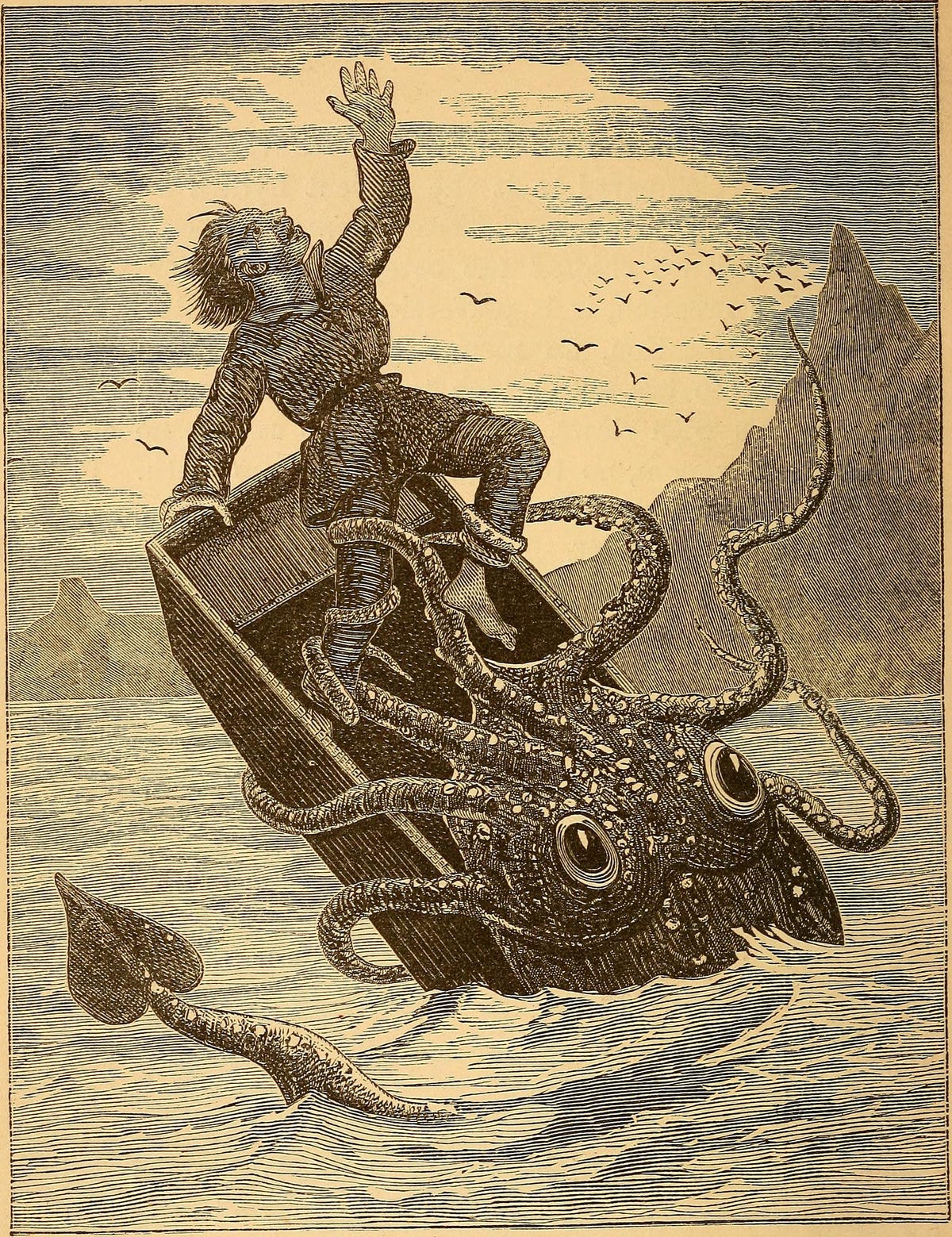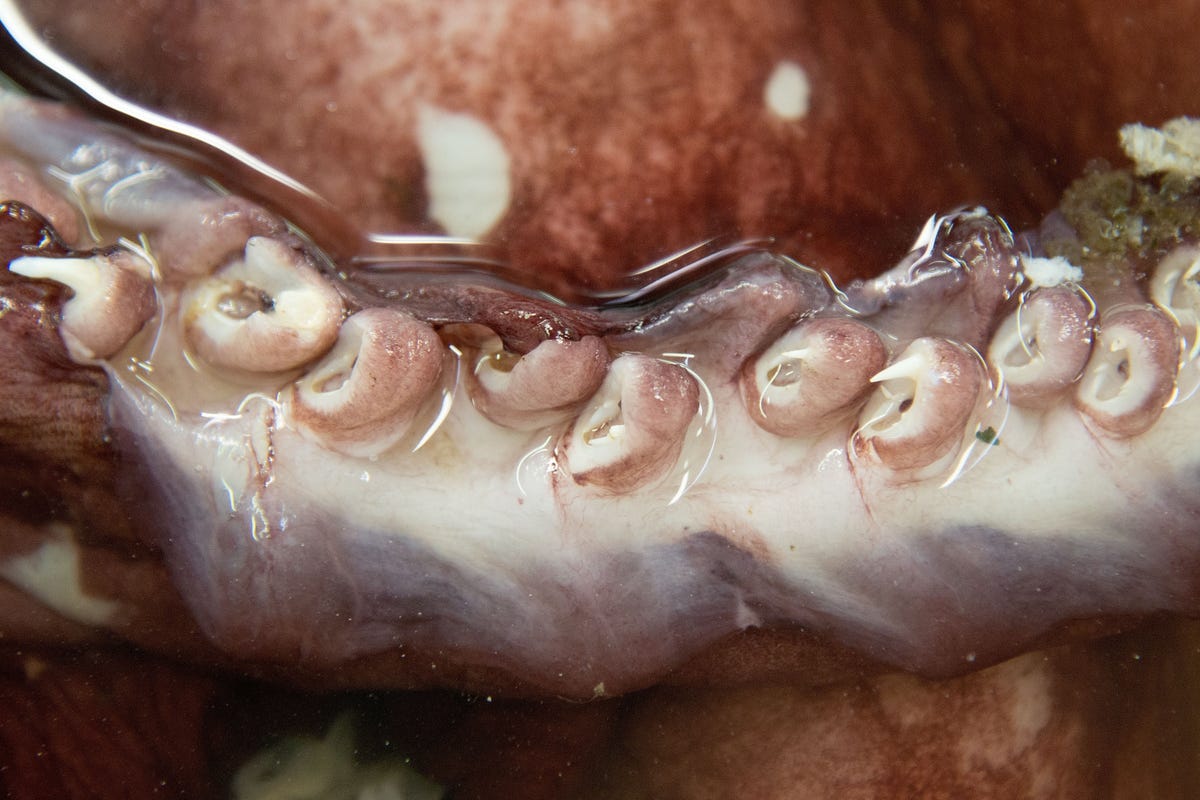These terrifying squids will freak you out (pictures)
Think that squids are just a bunch of adorable big-eyed sea creatures waiting to be your next plate of fried calamari? Think again.

The freaky world of squids
Sure, the tiny ones are delicious. But there are other ones. Bigger ones...with very creepy facts attached to them. There's a reason why stories of squids have haunted sailors' dreams for generations.
Vampire squids
Vampire squids (such as this one photographed by the Monterey Bay Aquarium Research Institute) are cephalopods that technically fall somewhere between octopi and squids but belong to their own class, Vampyromorphida. They don't feed on blood, but they do have the vaguely disturbing habit of turning themselves inside out if threatened.
Beware of the blob
If it's really stressed out, the vampire squid will fire a sticky blob of glowing mucus at an enemy...for up to 10 minutes.
Heads up
As a predator, the Humboldt squid can grab prey with a speed that observers have likened to lasers. They've also attacked the cameras and lights, and even the diving masks of humans trying to observe them.

Calamari dentata
Colossal squids, such as this one found in the Antarctic, also have wicked-looking suckers, along with arm hooks set in a double row in the middle of each arm.
Three words: Japanese. Flying. Squid.
Like we could make this up.
Yes, there are squids that can fly, and not just for a few feet at a time, either. Think 30 meters at a time, using membranes similar to that of a flying squirrel. A very tentacled, very muscular, very wet flying squirrel.
This specimen was photographed flying about 100 nautical miles north of a remote group of volcanic islands in the South Atlantic Ocean.
Almost human
The eyes of the squid have evolved in pretty much the same way that human eyes have. But...
You're creeping us out, dude
...the eyes of larger squids can be the size of dinner plates. These eyes came from a giant Humboldt squid caught in the Sea of Cortez.
Now that's an eyeball
Here's another shot of that squid eye, in case you needed an even closer view.
Light-up parasites
This cute little Hawaiian bobtail squid can light up, but only because of a colony of parasites living inside of it.
The parasite, a bacteria called Vibrio fischeri, is fed a sugary solution by the squid. In turn, the light-up parasite acts almost like a camouflage, hiding a backlit squid from predators when viewed from below.
Baby giant squids
Let's ease you into giant squids by first showing you what they look like when they're young and (relatively?) cute. These young giant squids, about 5.5 inches each, were caught in the waters near the Japanese city of Hamada in 2013.
You're looking at two of the first three baby giant squid ever caught.
Giant squids have very big children
To put things into perspective: The three baby squids, including the one shown here, are about the same size as non-giant adult squids. Those are some big babies.
Megasquids
Giant squids live in a sea so deep that it's not even clear what else is down there. What we do know is this: They can grow up to 40 feet. The only predators big enough to eat the adults are sperm and pilot whales.
Not even a deep-sea shark is brave enough to take on a full-grown giant squid.
Razor tongues and tentacles
That headline up there? Not a hyperbole. Giant squids essentially shred their prey before the unlucky victims even reach the esophagus. How? Two tentacles grip a deep-sea fish, pulling it toward the squid's beak.
If that isn't hurty enough...
Within that beak: a tongue with teeth on it. The file-like teeth make short work of the fish. And if that doesn't hurt, the serrated edge of each sucker on every tentacle sure will.
Fish tale
True story: Tom Mattusch, a Californian boat captain, once recounted a disturbing squid encounter to author Wendy Williams.
"He once caught two squid on one lure," she later recalled. "Apparently squid number one got hooked and squid number two took advantage by trying to eat the first animal ...
Red devil
"When Mattusch pulled them up, he thought at first he'd caught some kind of weird genetic monster with many more than 10 arms and tentacles. Then he realized the truth: Two in One."
The species of squid? Humboldt, like this one photographed by the Monterey Bay Aquarium Research Institute.
Chew with your...tentacles?
The Humboldt squid is also known as the red devil, or the wolf of the ocean. It is so deadly that even its suckers are covered in sharp teeth.
Under-ocean armor
One filmmaker, Scott Cassell, has even created his own homemade fiberglass body armor to protect himself from Humboldt squids when he dives.
Cannibal squids
Fun fact: Most squid species are cannibalistic. They eat each other. One exception: The bigfin reef squid, which, according to marine biologists, only rarely eat each other.
And one cute one
To be fair, not every squid has a creepy fact attached to it. This is the striped pyjama squid of Australia. Adorably, it's also called the dumpling squid, and...
Oh. Never mind. This squid is also, apparently, one of the roughly three cephalopods known to be poisonous.